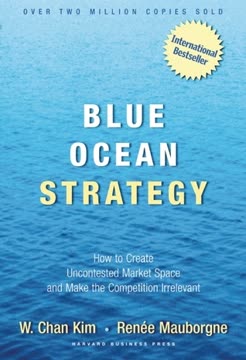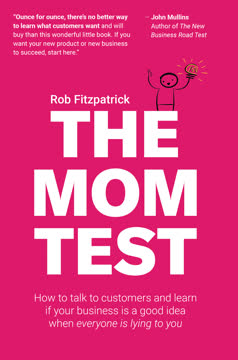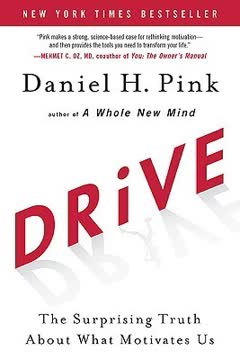Key Takeaways
1. Ditch Traditional Marketing: Embrace Direct Response
Most “ordinary” businesses advertise and market like much bigger brand-name companies, so they spend (waste) a lot of money on image, brand, and presence.
Traditional marketing is a waste. Most businesses mimic big brands, focusing on image and visibility, which is ineffective for small to medium-sized businesses. This approach is like a rabbit trying to act like a lion, which is not only ineffective but also dangerous. Instead, businesses should emulate direct marketers who prioritize immediate, measurable results.
Direct response is about sales. Direct marketing is about salesmanship multiplied in media, focusing on generating immediate, trackable results. It's about spending $1.00 on marketing and getting back $2.00 or $20.00 quickly, with clear accountability. This is in stark contrast to traditional marketing, which often relies on faith and hope.
Focus on your agenda. Big companies have different agendas, such as pleasing stockholders and building brand identity, while your agenda should be simple: sell something now. By focusing on your specific goals, you can avoid wasting resources on strategies that don't directly contribute to your bottom line.
2. Offers That Can't Be Refused: The Core of Direct Marketing
A key distinguishing characteristic of direct marketing and Direct-Response Advertising from all other marketing and advertising is the presentation of a very specific offer or offers.
Offers are essential. Every communication should include a specific offer, whether it's a direct purchase or a lead-generation offer. This is a key difference between direct marketing and traditional advertising, which often lacks a clear call to action. Without an offer, you're just a "professional visitor," not a salesperson.
Two types of offers:
- Direct purchase offers: Request immediate purchase, often with discounts or gifts.
- Lead-generation offers: Request contact information in exchange for free information or resources.
Threshold resistance. Offers range from low-threshold (free information) to high-threshold (free exam). Low-threshold offers are less intimidating and can attract a wider audience, while high-threshold offers are for those ready to buy now. A hybrid approach, combining both, can maximize response.
3. Urgency: The Secret to Immediate Action
There will be a reason to respond right now.
Hesitation is the enemy. People tend to procrastinate, so your marketing must create a sense of urgency. Without it, potential customers will put off responding, and you'll lose sales. Urgency is the key to pulling people past the edge of hesitation.
Creating urgency:
- Limited supply: Offer a limited number of products or services.
- Deadlines: Set clear deadlines for offers and discounts.
- Bonuses: Offer premiums or gifts for immediate action.
- Exclusivity: Create offers available only to a select group.
Structural urgency. Use group dynamics, auctions, or live events to create a sense of competition and immediate action. The goal is to make people feel they will miss out if they don't respond now.
4. Clarity is King: Make Them Obey Orders
You Will Give Clear Instructions.
Confusion kills response. People are generally good at following directions, but they need clear instructions. Confused or uncertain consumers do nothing. Your marketing must be clear about what you want them to do.
Clear instructions:
- Use simple language and avoid jargon.
- Provide step-by-step directions.
- Remove any assumptions about customer knowledge.
- Use clear calls to action, such as "Click This Button to Buy Now."
Order forms. Pay attention to the design and clarity of your order forms. They should be as clear and easy to use as possible. The clearer the marching orders, the happier the customer.
5. Accountability: No More Marketing Freeloaders
There Will Be Tracking, Measurement and Accountability.
Demand performance. Every marketing investment must be tracked, measured, and held accountable for results. There should be no freeloaders or slackers. This is especially important with online and social media, where metrics can be confusing.
Two reasons for accountability:
- Management by objectives: You can't manage what you don't measure.
- Data-driven decisions: You need facts to make good marketing choices.
Tracking response. Collect as much data as possible to determine what's working and what's not. This includes tracking the source of leads, the cost per customer, and the long-term value of customers.
6. Brand Building: A Byproduct, Not a Goal
Only No-Cost Brand-Building.
Don't pay for brand building. Most small businesses can't afford to invest in traditional brand-building. Instead, focus on direct response and let brand recognition be a free byproduct. Buy response, accept brand-building as a bonus.
Brand power is possible. Even mundane products can be branded effectively. Coca-Cola branded water (Dasani), Victoria's Secret branded undergarments, and Omaha Steaks branded steaks.
Unbranded advertising. Sometimes, unbranded advertising can be more effective, especially for lead generation. This approach can create curiosity and interest without being limited by existing brand perceptions.
7. Strong Copy: Shouting the Right Message
There Will Be Strong Copy.
Shouting isn't selling. In a crowded marketplace, you need to grab attention, but you also need a compelling message. Loud but irrelevant is no better than quiet and relevant. Your copy must be sensational and attention-commanding, but also relevant and credible.
Four chief sales copy mistakes:
- Focusing on the company, product, or service instead of the customer.
- Writing factually instead of emotionally.
- Being timid or bland in claims and promises.
- Violating Rules #1 and #2 (no offer, no urgency).
Write like you talk. Your copy should be conversational, enthusiastic, and emotionally appealing. Don't be afraid to make bold claims and promises.
8. Mail-Order Style: The Look of Direct Marketing
It Will Look Like Mail-Order Advertising.
Emulate mail-order ads. Direct marketing revolves around a short list of formats, primarily mail-order ads and sales letters. Ignore all other advertising styles. Classic mail-order ads are typically broken into three sections: headline, product presentation, and offer.
Mail-order formats:
- Classic mail-order ad: Headline, product info, offer.
- Advertorial: Mimics an article.
- Sales letter: A letter from you to the reader.
Swipe files. Collect examples of successful mail-order ads and use them for inspiration. This will help you stay within the box of mail-order ad appearance.
9. Results Rule: Money in the Bank
Results Rule. Period.
Only results matter. No opinions count, not even yours. Only results matter. If it sells, it's good. If it doesn't, it isn't. You must be committed to results, not brand awareness or other "fools' metrics."
Split testing. Use split tests and tests against controls to determine what works best. This will help you make data-driven decisions and optimize your marketing.
Study successful marketers. Pay attention to what successful direct marketers are doing in your industry. They are likely running tests and refining their approach.
10. Discipline: The Direct Marketing Diet
You Will Be a Tough-Minded Disciplinarian and Put Your Business on a Strict Direct Marketing Diet.
Will to win. Business success requires a strong will to win and a willingness to do what is necessary. This includes being thick-skinned, tough-minded, and disciplined.
Direct marketing diet:
- Purge your business of ineffective marketing.
- Create a simple, written marketing plan.
- Get the right tools, such as sales letters and websites.
- Track and measure everything.
- Devote time to learning and improving your marketing.
- Resist distractions and stay focused on your plan.
Be a tough-minded disciplinarian. You must be willing to say "no" to anything that doesn't conform to the rules of direct marketing.
11. The Results Triangle: Message, Market, Media
Every business, past or present, requires these three things to prosper: a Marketing Message, a Media to deliver it, and a Market to receive and respond to it.
Three components of marketing. Every business needs a message, a market, and a media. These three components are interconnected and must work together effectively.
Markets. Identify your ideal customer and target your marketing to them. This includes understanding their needs, interests, and preferences.
Message. Craft a message that speaks directly to your target market. This includes using emotional language, making bold claims, and providing clear instructions.
Media. Choose the right media to deliver your message to your target market. This includes using a variety of channels and testing different approaches.
12. The Dale Carnegie Secret on Steroids: Message-to-Market Match
When you move this to direct marketing, you can inject it with steroids and make it unbelievably powerful.
Personalization is key. People are most interested in themselves and their unique situations. Your marketing should acknowledge this and cater to their specific needs.
Message-to-market match. Tailor your message to specific market segments. This includes using different language, images, and offers for different groups.
Examples of message-to-market match:
- A real estate agent using different postcards for septic contractors, optometrists, and apartment building owners.
- A chiropractor targeting sufferers of chronic pain who are considering surgery.
Competitive advantage. By customizing your marketing, you can gain a significant competitive advantage over businesses that use a one-size-fits-all approach.
Last updated:
FAQ
What's "No B.S. Direct Marketing" about?
- Focus on Direct Marketing: The book is a comprehensive guide on how non-direct marketing businesses can effectively use direct marketing strategies to achieve breakthrough results.
- Real-Life Success Stories: It includes testimonials and case studies from various business owners who have successfully implemented the strategies outlined by Dan S. Kennedy.
- Practical Advice: The book provides actionable steps and rules for businesses to follow, emphasizing the importance of offers, clear instructions, and accountability in marketing.
- Author's Expertise: Written by Dan S. Kennedy, a renowned marketing strategist, the book leverages his extensive experience in direct marketing to offer valuable insights.
Why should I read "No B.S. Direct Marketing"?
- Proven Strategies: The book offers tried-and-tested marketing strategies that have helped businesses significantly increase their revenue.
- Comprehensive Guide: It covers a wide range of topics from foundational marketing principles to advanced application techniques, making it suitable for both beginners and experienced marketers.
- Real-World Examples: The inclusion of real-world examples and testimonials provides practical insights and inspiration for implementing the strategies.
- Focus on Results: The book emphasizes measurable results and accountability, ensuring that marketing efforts lead to tangible business growth.
What are the key takeaways of "No B.S. Direct Marketing"?
- Always Have an Offer: Every marketing communication should include a compelling offer to encourage immediate response.
- Clear Instructions: Provide clear and direct instructions to guide potential customers on what action to take next.
- Accountability and Measurement: Track and measure the effectiveness of marketing efforts to ensure accountability and continuous improvement.
- Focus on Direct Response: Shift from traditional advertising to direct-response marketing to achieve better engagement and results.
How does Dan S. Kennedy define direct marketing in "No B.S. Direct Marketing"?
- Salesmanship in Media: Direct marketing is described as "salesmanship multiplied in media," focusing on direct engagement with potential customers.
- Offer-Driven: It emphasizes the importance of making specific offers to elicit immediate responses from the audience.
- Measurable Results: Direct marketing is characterized by its focus on measurable outcomes, allowing businesses to track the success of their campaigns.
- Customer-Centric: The approach is centered around understanding and addressing the needs and desires of the target market.
What are the "Ten Commandments" of direct marketing according to Dan S. Kennedy?
- Always Have an Offer: Ensure every marketing piece includes a compelling offer.
- Reason to Respond Now: Create urgency to encourage immediate action.
- Clear Instructions: Provide explicit directions for the next steps.
- Tracking and Accountability: Measure the effectiveness of marketing efforts.
- No-Cost Brand-Building: Let direct response pay for brand-building efforts.
How can businesses apply the "Results Triangle" from "No B.S. Direct Marketing"?
- Message: Craft a compelling message that resonates with the target audience.
- Market: Identify and focus on the right market segment for your products or services.
- Media: Choose the appropriate media channels to deliver your message effectively.
- Integration: Ensure that the message, market, and media work together seamlessly to achieve the desired results.
What is the significance of "Information-First Marketing" in "No B.S. Direct Marketing"?
- Educational Approach: Information-First Marketing involves providing valuable information to potential customers before making a sales pitch.
- Builds Trust: By offering useful content, businesses can establish trust and credibility with their audience.
- Lead Generation: It serves as an effective lead-generation tool by attracting interested prospects.
- Differentiation: This approach helps differentiate a business from competitors who focus solely on selling.
How does "No B.S. Direct Marketing" address the issue of customer retention?
- Follow-Up Systems: The book emphasizes the importance of having a structured follow-up system to maintain engagement with customers.
- Relationship Building: It advocates for ongoing communication to nurture relationships and encourage repeat business.
- Customer Feedback: Encourages businesses to seek and act on customer feedback to improve satisfaction and loyalty.
- Value Addition: Suggests providing additional value to customers through exclusive offers and personalized communication.
What role does "Trust" play in "No B.S. Direct Marketing"?
- Foundation of Relationships: Trust is seen as a critical component in building long-term customer relationships.
- Brand Loyalty: High levels of trust lead to increased brand loyalty and customer retention.
- Competitive Advantage: Trust can differentiate a business from its competitors, making it a key competitive advantage.
- Risk Mitigation: Trust reduces perceived risk for customers, making them more likely to engage and purchase.
What are some of the best quotes from "No B.S. Direct Marketing" and what do they mean?
- "Always Have an Offer": This quote emphasizes the necessity of including a compelling offer in every marketing communication to drive action.
- "Results Rule. Period.": Highlights the importance of focusing on measurable outcomes and holding marketing efforts accountable for results.
- "Trust is the Ultimate Currency": Suggests that trust is more valuable than any other asset in business, as it leads to long-term customer relationships and loyalty.
- "Direct Marketing is Salesmanship Multiplied": Reinforces the idea that direct marketing is about effectively selling through media channels.
How does "No B.S. Direct Marketing" suggest businesses handle competition?
- Differentiation: Focus on unique selling propositions (USPs) to stand out from competitors.
- Trust Building: Establish trust with customers to create a loyal customer base that is less likely to switch to competitors.
- Value Proposition: Clearly communicate the value and benefits of your products or services to potential customers.
- Continuous Improvement: Regularly assess and improve marketing strategies to stay ahead of the competition.
What are the practical steps for implementing direct marketing strategies from "No B.S. Direct Marketing"?
- Identify Target Market: Clearly define and understand your target audience.
- Craft Compelling Offers: Develop offers that are attractive and relevant to your audience.
- Choose the Right Media: Select media channels that effectively reach your target market.
- Measure and Adjust: Continuously track the performance of marketing efforts and make necessary adjustments for improvement.
Review Summary
No B.S. Direct Marketing receives mixed reviews, with an overall rating of 4.10/5. Many readers appreciate Kennedy's straightforward approach and practical advice on direct marketing principles. The book's concise rules and no-nonsense style are praised, though some find it outdated or too focused on self-promotion. Critics point out that not all chapters are written by Kennedy and that some content feels like advertising. Despite these drawbacks, many readers find value in the book's direct marketing strategies and consider it a useful resource for entrepreneurs and marketers.
Similar Books










Download PDF
Download EPUB
.epub digital book format is ideal for reading ebooks on phones, tablets, and e-readers.













